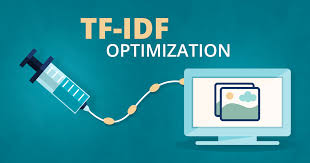
TF-IDF, which stands for Term Frequency-Inverse Document Frequency, is a crucial concept in the world of search engine optimization (SEO). It is a statistical measure used to evaluate the importance of a keyword within a document relative to a collection of documents.
TF-IDF helps search engines understand the relevance of a particular keyword within a webpage. By analyzing the frequency of a term in a document and comparing it to its frequency across all documents, search engines can determine the significance of that term in relation to the content on the page.
Implementing TF-IDF in your SEO strategy can help improve your website’s visibility and ranking on search engine results pages (SERPs). By optimizing your content with relevant keywords based on their TF-IDF values, you can increase the chances of your pages appearing higher in search results for specific queries.
Furthermore, TF-IDF can help you identify and target long-tail keywords that are less competitive but highly relevant to your content. This can give you an edge over competitors and attract more qualified traffic to your website.
Incorporating TF-IDF analysis into your SEO efforts requires careful keyword research and content optimization. By understanding the importance of specific terms within your content and adjusting their usage based on TF-IDF values, you can create more targeted and valuable content for both users and search engines.
Overall, leveraging TF-IDF in your SEO strategy can lead to improved organic traffic, higher rankings, and better visibility for your website. Stay ahead of the competition by harnessing the power of TF-IDF to optimize your content effectively.
To excel in SEO, it is crucial to grasp the concept of TF-IDF (Term Frequency-Inverse Document Frequency). TF-IDF plays a pivotal role in determining the relevance and significance of keywords within your content relative to the broader context of all documents. By understanding how TF-IDF works, you can strategically optimize your content with the right keywords to enhance search engine visibility and improve your website’s ranking on SERPs. Mastering TF-IDF empowers you to create more targeted and effective content that resonates with both search engines and your target audience, ultimately driving organic traffic and boosting your online presence.
Utilizing TF-IDF in your SEO strategy allows you to pinpoint crucial keywords that hold significance within your content. By analyzing the Term Frequency-Inverse Document Frequency values, you can identify and prioritize keywords that are highly relevant to your content. This approach enables you to optimize your website with the most important and contextually appropriate keywords, ultimately enhancing your search engine visibility and attracting targeted organic traffic to your site.
To enhance your search engine rankings, it is essential to prioritize optimizing your content with keywords that have high TF-IDF scores. By focusing on incorporating these relevant and significant terms into your content, you can effectively communicate the relevance of your webpage to search engines. This strategic approach not only improves the visibility of your website but also increases the likelihood of attracting organic traffic from users searching for specific topics related to your content.
To achieve optimal SEO results using TF-IDF analysis, it is essential to strike a balance between term frequency and inverse document frequency. While term frequency reflects the importance of a keyword within a specific document, inverse document frequency considers the significance of that keyword across all documents in a collection. By maintaining equilibrium between these two factors, website owners can create content that is not only rich in relevant keywords but also strategically optimized to stand out in search engine rankings. This balance ensures that the content remains both informative and search engine-friendly, leading to more effective SEO outcomes.
Regularly analyzing and updating your content based on TF-IDF insights is essential to maintaining a competitive edge in search engine results. By continuously monitoring the relevance and importance of keywords within your content, you can adapt to evolving search algorithms and user preferences. Updating your content based on TF-IDF analysis ensures that your website remains optimized for search engines, increasing the likelihood of ranking higher in search results and attracting valuable organic traffic. Stay ahead of the competition by integrating TF-IDF strategies into your content optimization efforts and consistently refining your SEO approach to meet the dynamic demands of the digital landscape.
When delving into TF-IDF SEO optimization, it’s beneficial to consider utilizing tools or plugins that can calculate TF-IDF scores. These resources can streamline the process of analyzing keyword relevance and optimizing content based on TF-IDF values. By incorporating such tools into your SEO strategy, you can efficiently identify key terms, adjust their usage in your content, and enhance the overall relevance and visibility of your website in search engine results.
To enhance your SEO strategy using TF-IDF, it is recommended to experiment with various keyword variations and analyze their impact on TF-IDF values. By testing different keywords and observing how they affect the relevance and importance of your content, you can fine-tune your optimization efforts for better results. Adjusting your keyword usage based on TF-IDF analysis allows you to target the most relevant terms effectively, ultimately improving the visibility and ranking of your website in search engine results.